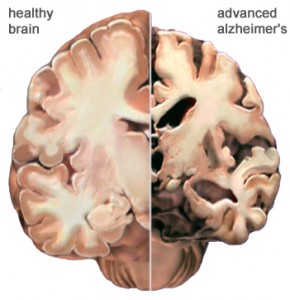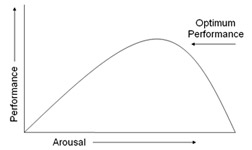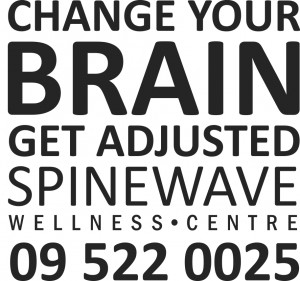 “I had not been sleeping well, suffered from headaches, and generally felt drained with a constant sense of doom and what I call ‘fogginess’ most of the time. I never thought for one moment that chiropractic work could be of help.”
“I had not been sleeping well, suffered from headaches, and generally felt drained with a constant sense of doom and what I call ‘fogginess’ most of the time. I never thought for one moment that chiropractic work could be of help.”
Brain fog is an unofficial diagnosis for poor concentration, lack of mental clarity, inability to focus, indecision or forgetfulness. The term I like to use more is a sense of disconnectedness.
Disconnectedness implies a cognitive dissonance between thought and behaviour; and a dissonance between perception and reality. When perception of body or emotion is distorted, you may feel something, but that’s not what’s really going on.
 There could be a hundred-and-one physiologic reasons for brain fog ranging from toxic, to neurologic, vascular, hormonal, infectious, traumatic or elemental deficiency. However, in context of “fogging of the brain” in relatively normal people – giving the definition of “normal people” a wide berth itself – all roads lead to brain. So we can look at the brain becoming fogged because of its inability to maintain normal cortical function.
There could be a hundred-and-one physiologic reasons for brain fog ranging from toxic, to neurologic, vascular, hormonal, infectious, traumatic or elemental deficiency. However, in context of “fogging of the brain” in relatively normal people – giving the definition of “normal people” a wide berth itself – all roads lead to brain. So we can look at the brain becoming fogged because of its inability to maintain normal cortical function.
The cortex is the outer layer of the brain that requires constant stimulation to keep us engaged in life. It’s where our higher “human” functions come from. The cerebral cortex is also the area that becomes damaged, shrinks and dies in the process of Alzheimer’s Disease, which would obviously be an extreme case of brain fog.
For optimal performance on a day to day basis, the cortex requires the appropriate amount of “arousal” to keep it stimulated in a positive fashion. This can also be called eustress: the right amount of stress which is healthy and promotes learning and growth. When the cortex becomes overstimulated, or over-stressed, this is called distress and has a negative impact on its function and performance. Finding balance is the key.
 Arousal is a term that can be used to describe a level of physiological activity in the body leading to activation of the cortex, because all roads lead to brain. The inverted-U theory states that as arousal increases, so too does performance, up to a point where further increases in arousal cause performance to decrease (see graph).
Arousal is a term that can be used to describe a level of physiological activity in the body leading to activation of the cortex, because all roads lead to brain. The inverted-U theory states that as arousal increases, so too does performance, up to a point where further increases in arousal cause performance to decrease (see graph).
The challenge with modern day society is that we’re over-stimulated, most of the time, beyond the point of optimum performance for the brain. Especially when we’re setting big challenges for ourselves with high expectations, or simply trying make ends meet. Either end of that challenge spectrum eventually ends in burn out unless managed properly. As the curve begins to dip over the other side, signs and symptoms of stress start to manifest in the form of pain, skin or gut problems, fatigue, moodiness or brain fog. And then if cortex is pushed too far, anxiety and panic set in.
The trouble with an “unofficial diagnosis” like brain fog is that it presents with “unofficial symptoms”, from “unofficial causes” like an over-stimulated cortex, which obviously won’t be detected in a blood test. So how do we figure it all out and correct the problem? As the Germans would say: We have ways and means.
About 2 months ago I heard Neil from Spinewave Wellness Centre speak about the work he does in helping people feel better through upper cervical chiropractic work.
I have been to chiropractors off and on for over 30 years and have found them helpful to a certain point at the time, but I had never heard one talk about my symptoms or the long term treatment the way Neil did.
2010/2011 has been tough for me in a number of ways and for a while I had not been sleeping well, suffered from constant headaches and generally felt drained with a constant sense of doom and had a sense of what I call “fogginess” most of the time. I experienced occasional ringing in my ears and a constant annoying eye twitch. I never thought for one moment that chiropractic work could be of help.
I was sent a very detailed fact gathering form to be completed before I met with Neil. The first appointment with Neil was very thorough and he asked a lot of questions and did a lot of testing. Neil explained everything in great detail and in words I could understand.
It appeared that I had been internalising stress for quite some time which resulted in my body reacting the way it did. Neil explained that the treatment would not show immediate results but over time the adjustments made would result in me feeling much better.
The results came faster than I or Neil expected and after a month of treatments twice a week I was sleeping better and had lost that constant sense of dread and fogginess.
One of the tests Neil got me to do was a balancing test. Balance was something I was good at previously through dancing and a bit of yoga. However I had noticed that I couldn’t balance on one leg anymore, but I put that down to getting older and lack of practice. However after a few weeks of treatment my balance returned much to my delight in a yoga class.
Another area Neil identified as having a negative effect on my body was my breathing method and now with his help I am much more aware of how I breathe.
The treatment I have received from Neil and his wonderful assistant Pip has been a godsend. Each session has been varied as Neil adjusts different areas – he did not try to fix it all in one go as has been my experience in the past. As Neil says you cannot expect to get fit by going to the gym once a month.
I do not like to use the term holistic as it is overused but Neil does take an approach where he examines every possible aspect of cause-effect and best fix. You know he thinks about his clients long after he has seen them and takes each situation personally.
Thank you Neil and Pip for making me feel more like the real me again.
© Dr Neil Bossenger 2012


